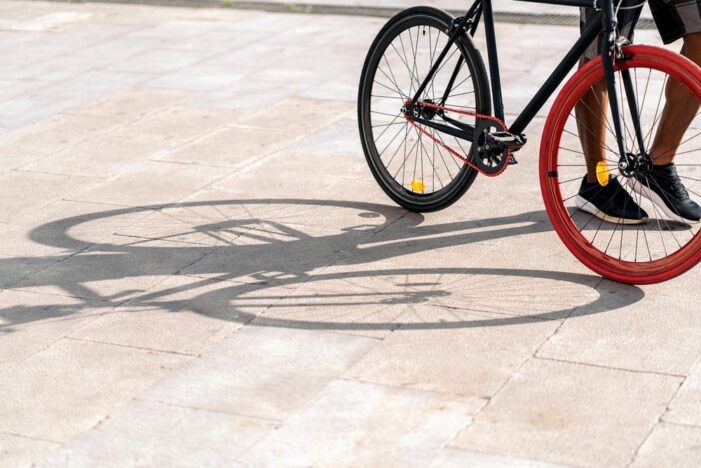By Chris Tobias
If you’re new to cycling, or to cycling in urban areas, you’ll need to be alert to a number of potential hazards. While cycling is an excellent way to travel, being good for your health and planet-friendly, too, accidents can all too easily occur if you’re unprepared. Dedicated cycle lanes improve safety levels, but they can give cyclists a false sense of security because the lanes are not hazard-free. Here are four key dangers to watch for on your way through city streets.
1. The sudden end of a cycle lane
If the roads in your town have dedicated cycle lanes, you’re off to a good start. You’ll be separated from the flow of traffic beside you, with a clear way ahead. But you’ll still need to keep alert. Cycle tracks rarely run the full length of a road and, in many cases, stop abruptly at a junction or merge unexpectedly with the traffic. The route may also be blocked by a vehicle illegally parked on it, or by a wide vehicle on the road overlapping it.
You might also encounter pedestrians on the cycle track, preparing to cross the road, perhaps with prams, strollers, wheelchairs or dogs. There will also be other cyclists, travelling at different speeds, some overtaking you and others in your path. For all these reasons, it’s vital to stay alert at all times, even in the bicycle lane.
2. An obstacle in your path
Items might be deposited on a road at any time, whether dropped, blown or intentionally placed there. When visibility is good and the road is straight and flat, you may spot the obstruction in time to avoid it. But in darkness or fog, or with hills or bends ahead, you may not see it until the last moment, if at all.
Four-wheel vehicles can often drive safely over small items, so the traffic ahead may provide no warning, but if you notice vehicles veering to one side or slowing down, you’ll know there’s a significant hazard in the way. To be on the safe side, keep your fingers over the brakes at all times, and scan the road and traffic ahead as you go.
3. Traffic passing too close
Even if you’ve only just started cycling, chances are you’ve already had the unnerving experience of cars brushing past uncomfortably close. While many drivers will provide a respectful berth, there are always exceptions. One of the chief dangers of a close-brushing vehicle is that the cyclist may wobble from sheer panic and lose their balance.
Another danger is that the encroaching vehicle prevents the cyclist from dodging an obstruction. A cool head and firm handlebar grip will help here, and ideally, the astuteness to anticipate the squeeze and warn the driver with signs and sounding of your bell or horn.
It’s also wise to ride in the middle or outer edge of your available space, rather than up against the curb, to allow yourself room to swerve as need be. For extra protection, you might like to attach a short stick to your traffic-side handlebar, positioned to protrude horizontally. This will provide a deterrent to anyone driving too close, as no one wants a scratch on their paintwork.
4. Vehicles turning across your path
If you’re a driver as well as a cyclist, you’ll know how difficult it is to spot a cyclist on your passenger side. You’ll also appreciate how important it is to signal well ahead of turning across them, and to check their location again as you turn, just in case they’ve failed to realize you’re turning. But not all drivers are so vigilant or considerate, and accidents can all too easily arise this way. With this in mind. be sure to make your presence known to adjacent drivers at junctions, ideally making eye contact, and check their turning indicators, too.
When you’re ready and alert for these common hazards, you can cycle safely to your destination. What’s more, you’ll have the due confidence to relax and enjoy the ride.
Finally, if you were involved in a bike accident, know your rights. Ask the Lawyer. Call 855-768-8845.

